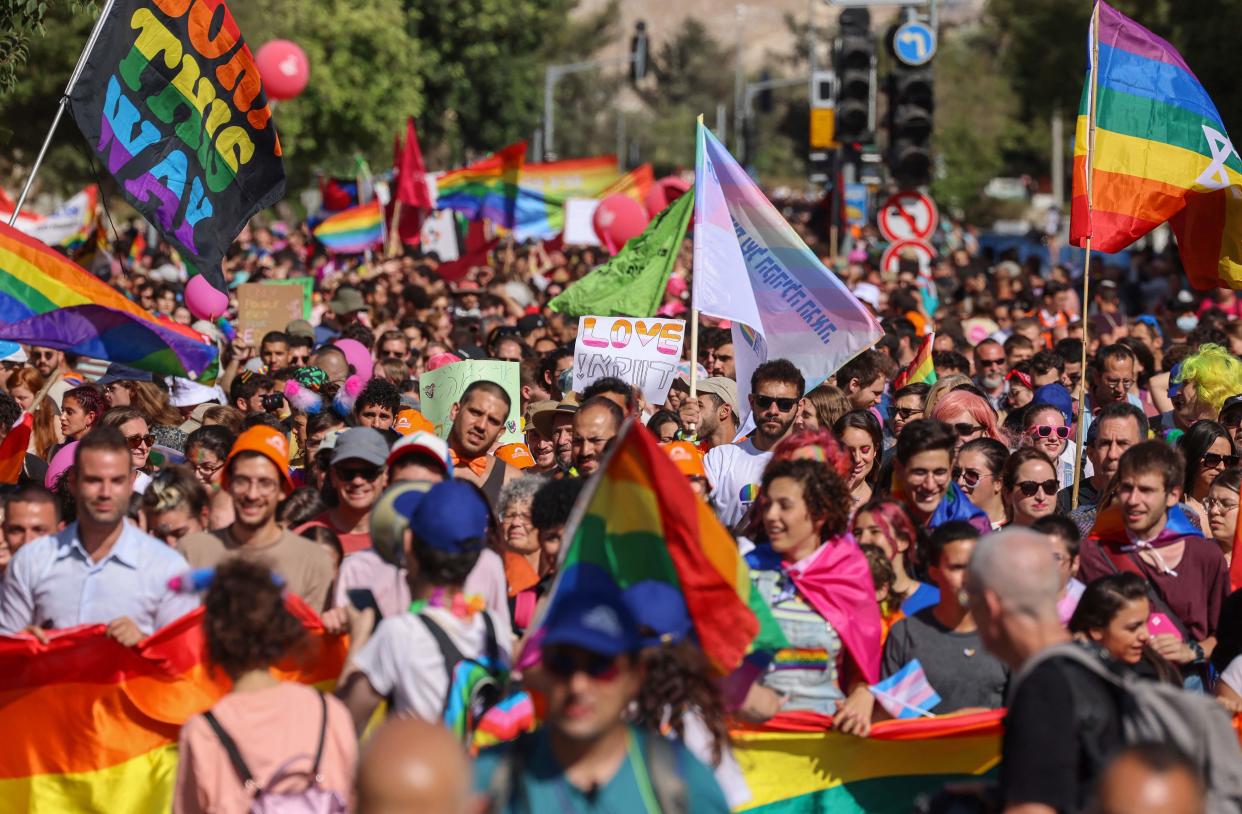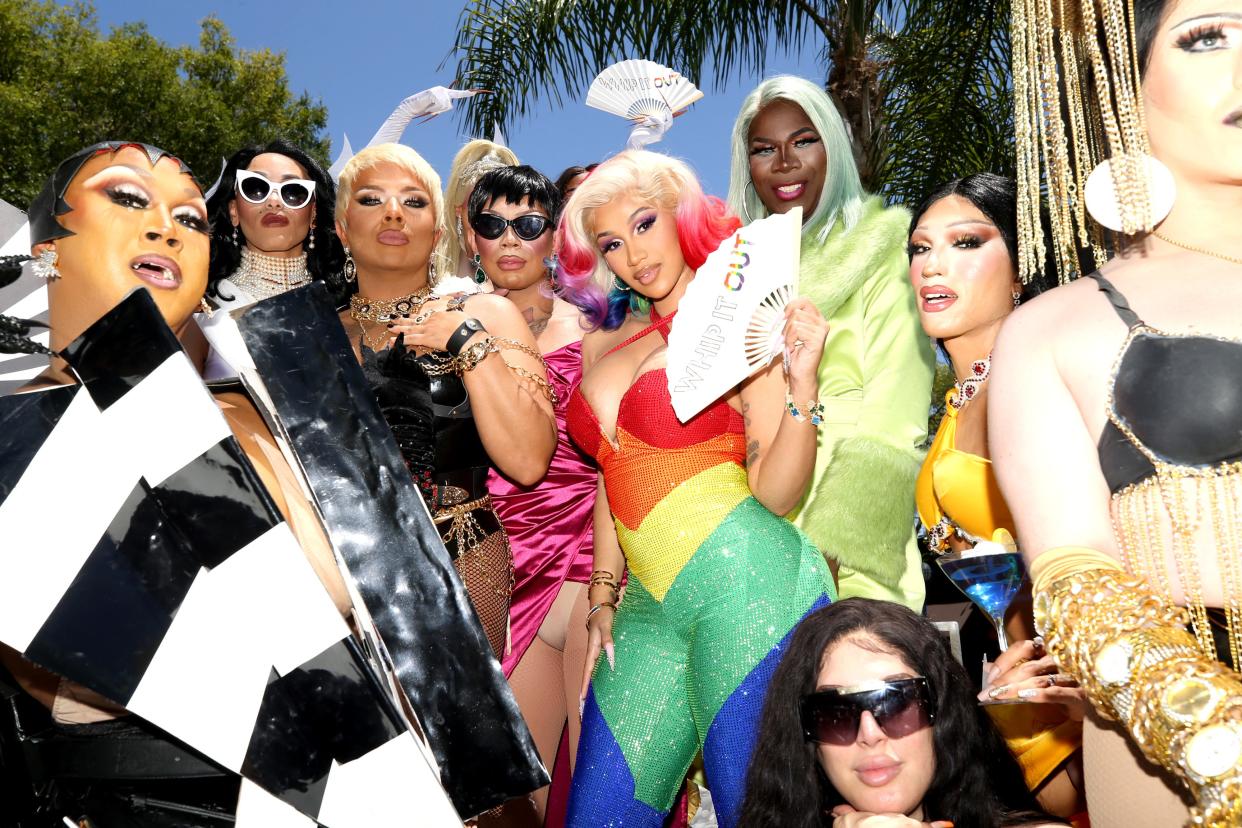What does the 'B' in LGBTQ stand for? The difference between bisexuality and pansexuality.
Millions of Americans identify as LGBTQ, and just over 20% of Gen Z are part of the LGBTQ community. More than half of LGBTQ Americans identify as bisexual, the largest category in the community.
As we begin to learn more about the Colorado Springs shooting and the community mourns those who lost their lives and were injured at Club Q, some have questions about how to support their LGBTQ+ loved ones.
The best first step is to learn about the community. Asking your LGBTQ+ friends and family is an option, but be mindful of placing the burden of your education on others when there are so many resources at your disposal.
LGBTQ Resources: How to help Club Q victims after Colorado Springs shooting
What does the ‘B’ in LGBTQ stand for?
The B in LGBTQ stands for bisexual. LGBTQ is an acronym of identities related to sexual orientation and gender identity.
What each letter in LGBTQ means:
L: Lesbian
G: Gay
B: Bisexual
T: Transgender
Q: Queer or questioning
In recent years, many have added I and A — intersex and asexual — to the lineup. The plus sign is often tacked onto the end to signal identities in the community that perhaps don’t fit into the other letters like pansexual, polyamorous, Two-Spirited or others who don’t want to label their sexuality.
What does the 'Q' in LGBTQ stand for?: How the word 'queer' was reclaimed
Timeline of trans rights: Educate yourself about history, definitions and gender identity

What does bisexual mean?
A bisexual person is someone who is attracted to more than one gender, but the term is often used to describe a wide spectrum of identities.
One of the most widely used definitions of bisexuality comes from activist and editor Robyn Ochs:
"I call myself bisexual because I acknowledge that I have in myself the potential to be attracted — romantically and/or sexually — to people of more than one sex and/or gender, not necessarily at the same time, not necessarily in the same way, and not necessarily to the same degree," Ochs says.
The term bi+ has also gained traction in recent years. Some use it as an umbrella term to describe people who experience any degree of attraction to more than one gender. This includes individuals who identify as pansexual, queer, omnisexual, fluid and more. The most important thing for many people identifying under the umbrella term bisexual or bi+ is that the label feels right for them. Not everyone is comfortable with or desires a label on their sexual and romantic attraction.
Coming out at the doctor: Inside the push for bisexual-affirming medical care
When was the word bisexual first used?
The first known use of the word bisexual dates to 1859 when anatomist Robert Bentley Todd used the term to describe what we now call intersex — the possession of male and female physical characteristics in the same body.
According to Stonewall, the word described a combination of masculine and feminine characteristics, now known as androgyny, at the turn of the 20th century. Only beginning in the 1910s was the word used to describe sexual and romantic attraction. In 1915, Sigmund Freud wrote about universal bisexuality as a combination of masculinity and femininity in gender and a more fluid sexual and romantic attraction.
Combatting loneliness: What we don't talk about when it comes to LGBTQ elders.
Explaining biphobia: With false stereotypes, bisexual people face a unique bias.
What are the colors of the bisexual flag?
The colors of the bi pride flag are blue, pink and purple. The flag was created in 1998 by Michael Page, with pink representing attraction to the same sex, blue meaning attraction to the opposite sex and a purple stripe between the two signaling attraction to more than one.
What does pansexual mean?
While bisexual broadly describes attraction to more than one gender, pansexuality is attraction regardless of gender, but the two often overlap in ways that are nuanced and entirely personal to the individual.
One of the most well-known explanations of pansexuality is portrayed in sitcom Schitt’s Creek. In season 1, episode 10, David Rose and Stevie engage in a brief sexual relationship, surprising Stevie because she assumed David was gay.
“I only drink red wine,” Stevie says, referencing the fact that she is only attracted to men. “And up until last night I was under the impression that you too only drank red wine. But I guess I was wrong?”
“I do drink red wine, but I also drink white wine, and I’ve also been known to sample the occasional rosé,” David explains. “And a couple summers back I tried a Merlot that used to be a Chardonnay, which got a bit complicated … I like the wine and not the label, does that make sense?”
Whether you drink red wine, white wine, all wines or no wine at all, #SpiritDay celebrates you! Learn more at https://t.co/6F3XTJyQkg. pic.twitter.com/aPeRs7DNKu
— Schitt's Creek (Pop) (@SchittsCreekPop) October 15, 2020
Resources
If you're questioning your identity or looking for how best to support your LGBTQ loved ones, these resources can help. Find organizations with free education, crisis intervention, peer support and information below:
Trevor Project: Call 866-488-7386, Text 678-678
24/7 Year round crisis intervention and suicide prevention services to lesbian, gay, bisexual, transgender and questioning (LGBTQ) young people ages 13-24.
Community connection, free resources, definitions for bi+ community
400+ chapters across the country providing confidential peer support, education, and advocacy to LGBTQ+ people, their parents and families, and allies.
Crisis Text Line: Text START to 741-741
Free, 24/7 support for those in crisis. Text from anywhere in the U.S. to connect with a trained Crisis Counselor.
The Gay, Lesbian, Bisexual and Transgender National Hotline: 888-843-4564
The GLBT National Youth Talkline: (800) 246-7743
Youth serving youth through age 25
Trans Lifeline: 877-565-8860
Education, awareness and resources
Celebrities you might not know are bisexual:

Megan Fox: “Putting the B in #LGBTQIA for over two decades,” Fox said on her Instagram last June.
Jason Mraz: The “I’m Yours” singer wrote a Pride Month poem for Billboard in 2018 when coming out as bisexual.
Kristen Stewart: The “Spencer” star explained to The Guardian in 2017 that being bisexual doesn’t mean being confused.
Lili Reinhart: Reinhart told Flaunt that while her bisexuality has been no secret in her personal life, she was worried about being accused of “faking it to get attention” in the media.
Aubrey Plaza: Plaza told The Advocate in 2016 that having a large LGBTQ following is “the ultimate compliment,” while sharing that she “can’t help” falling in love with both guys and girls.
Angelina Jolie: The actor has openly talked about relationships she’s had with women and men in the past.
Cardi B:When Cardi B’s bisexuality was questioned on Twitter, she replied with a snappy comeback about how she doesn’t owe proof of her sexuality to anyone.
Lady Gaga: An icon in the queer community, the “Rain On Me” singer told Rolling Stone about how being bisexual has impacted her life and relationships.
Halsey: The singer has been openly bisexual for quite some time, telling fans in an award acceptance video that she’s working to be a better representative of the LGBTQ community.
Stephanie Beatriz: The “Encanto” actor is famously known for her openly bisexual Brooklyn Nine-Nine character.
Auli’i Cravalho: The “Moana” star opened up to Vogue about receiving “encouraging” roles where she’d play gay or bisexual characters.
Willow Smith: Smith opened up to her mother and grandmother on a “Red Table Talk” episode about being bisexual and polyamorous.
Tyler Blackburn: The “Pretty Little Liars” veteran told The Advocate in 2019 that he’s identified as bisexual since he was a teenager.
This article originally appeared on USA TODAY: What is the 'B' in LGBTQ? Difference between bisexual and pansexual.
